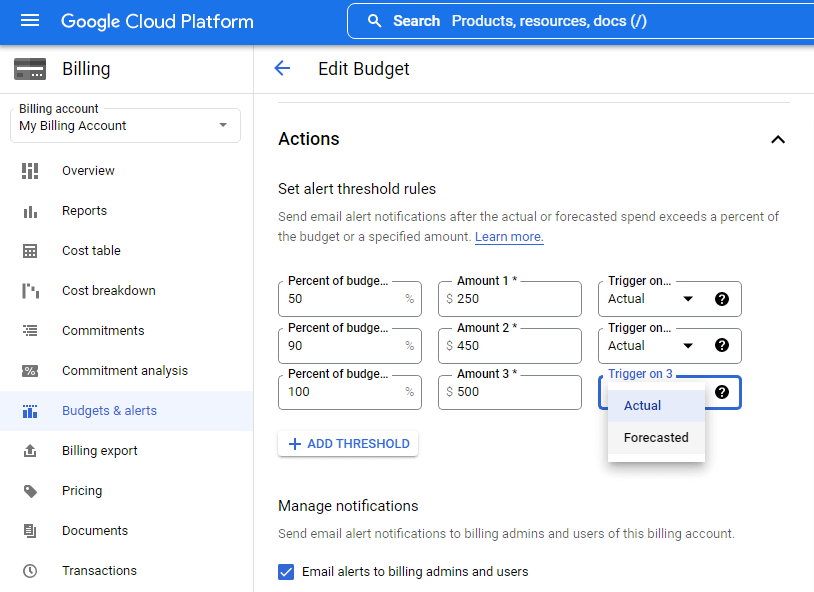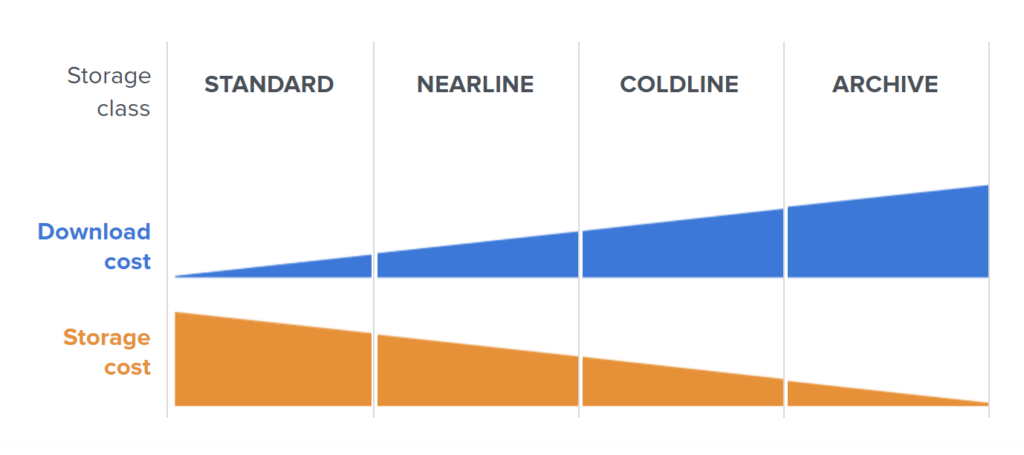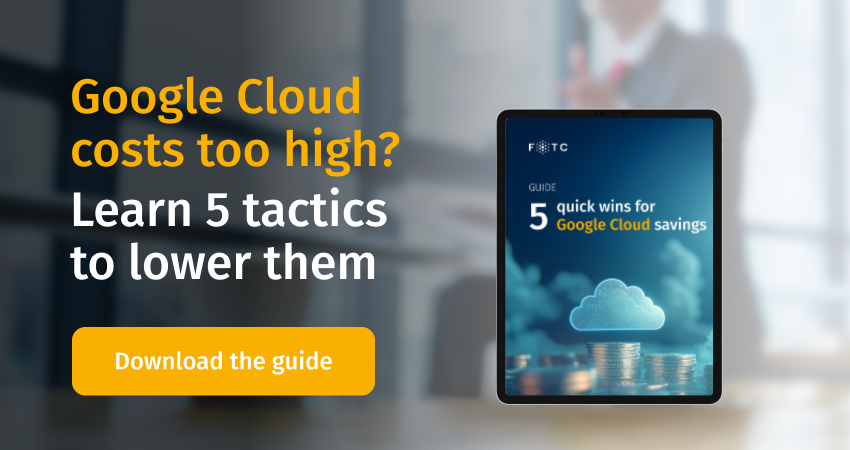If you ask entrepreneurs using the public cloud, what motivated them to switch to cloud computing, many will answer with “cloud cost management”. And if you ask others why they’re not choosing the cloud, they’ll probably answer that the cloud is expensive, and cloud cost management is a marketing ploy.
Is a public cloud like the Google Cloud really expensive? That depends – people looking only at the price of the service taken out of context will see exorbitant sums. On the other hand, when looking at it from a broader perspective, you can see the cloud cost management and optimization possibilities arising from the differences between using the cloud and on-premise, from the service flexibility or discount availability.
Learn how to pay less for GCP – here are the 10 savings options that beginner Google Cloud users should take a look at.
1. Understanding how to pay for cloud services
Paul J. Sussex, EY Americas Digital and Financial Services Cloud Leader, said that migration from on-premise to the public cloud is like moving from an apartment with a fixed water fee to an apartment where the fee depends on current water consumption. Over time, you learn to turn off the faucets and, as a result, pay less.
In the case of GCP, you pay for usage, most often calculated per second or per minute. It’s good practice to enable automatic service scaling – up when the load is heavy, and down when the traffic decreases. A small load equals a small fee, while a higher load – a higher fee, but also the certainty of accepting all guests without worrying about a potential failure.
A simple way to save money is also to disable services when they are not needed. For example, instances with development or test environments can be disabled after the team’s working hours. Instead of operating (and accumulating costs) for 168 hours per week, the service will run from Monday to Friday, 40-50 hours per week. And that provides savings of 75%.

2. Appropriate billing and payment account configuration
Opening a Google Cloud account is easy. Proper setup, security, and expense control are also simple, but require a moment of focus. You can take your first steps in the GCP console with confidence by using the free voucher. The voucher you receive from the Google Cloud Partner is sufficient to familiarize yourself with the budget control options – the first step in effective cloud cost management. One of the first steps should be to set up e-mail alerts about the usage level. You can indicate any budget you want to monitor – 20 PLN, as well as 200 thousand PLN – and the achieved consumption ceilings or forecasts which you want to receive e-mail notifications of. Alerts can be set in the Billing – Budgets & Alerts tab.
It is also worth checking the budget in the panels:
- Overview – contains basic usage information along with remaining promotional funds,
- Reports – a graph showing the usage level; the data can be filtered by dates, projects or services,
- Cost table – a detailed list of cost-generating projects and services; the table allows you to monitor even the lowest usage and see what cloud resource amounts were used by which account, when and why.
3. Recommender – a tool indicating cost optimization opportunities
The Google Cloud platform gives you access to the free Recommender service. It indicates the opportunity of introducing nondemanding improvements – including in the area of security and granting access, as well as usage and costs.
This tool monitors the actions you take in the console, the way you configure and use cloud services, and, using machine learning mechanisms, proposes cloud cost management options. The Recommender can indicate redundant resources or improperly configured virtual machines, with more power than necessary, unnecessarily consuming the budget. This will reduce costs without sacrificing performance.
The Recommender also puts forward promotional offers which your project meets the conditions for (e.g. Committed use discounts).
4. Appropriate storage class in Cloud Storage
Cloud Storage is one of the most popular Google Cloud services. Proper service configuration and management of stored files (often with the support of automation) translate into considerable savings.
Cloud Storage offers four storage classes to choose from:
- standard – for files in continuous use,
- nearline – for files not used for at least 30 days,
- coldline – for files not used for at least 90 days,
- archive – for files not used for at least 365 days.

The costs vary between classes. In the standard class, the payment for storing a current presentation file, which customers download from the website every day, is minor; however, the payment is relatively higher for archiving previous presentation versions, which a user may return to once every few months or less. On the other hand, archiving in the coldline or archive class costs little, but storage of frequently used files will hit your wallet quite a bit.
In Cloud Storage, you can set a rule for automated changing of repository (bucket) classes – for example, a bucket with unused files will move from standard to nearline after 30 days, with a lower archiving price.
5. Virtual machine selection and configuration depending on the needs
Properly performed instance configuration can provide returns in the form of large savings. Google Cloud offers users a range of virtual machines – with different storage capacities (from 2 to 896 GB) and vCPU (from 0.2 to 416 GB), and thus a different usage price. You can tailor your machine specifications to precisely suit the needs of each project – and pay only as much as required.
The cost of using the power of virtual machines can also be reduced with Spot VMs. They are machines that can divide unused computing power between tasks (for this reason, the speed of the performed activities may decrease slightly). Resources are consumed to their fullest, and the cost of maintaining an instance is lower than with standard VMs.
6. Committed use discounts – discounts for fixed vCPU and memory usage
While we’re on the topic of virtual machines, it is worth mentioning Committed use discounts – discounts for the commitment to a fixed level of vCPU or instance memory usage in Compute Engine, Google Kubernetes Engine and Dataproc services.
For example, you are using virtual machines and have “in stock” instances of 24 vCPU in total. Your app uses at least 8 vCPUs a month – there are sudden increases, but loads rarely fall below 8 vCPUs. You can commit to a fixed usage of this resource for a period of one or three years and pay a lower instance fee. The discount works similarly in the case of a commitment to virtual machine memory usage.
In the case of standard machines, savings can reach 57%, and in the case of high-memory machines – up to 70%. Discounts apply to all virtual machines; only machines with a shared f1-micro and g1-small core are excluded.
7. Sustained use discounts – for long-term use
Sustained use discounts are another way of reducing computing costs for Compute Engine and Google Kubernetes Engine services. It is an automatic discount, and the longer you use a service, the lower the fee becomes – up to 30%.
For example, if you use a machine for half a month, you get a 10% discount on the base price; a 20% discount when using for 3/4 a month, or a 30% discount when the machine is running for the entire month.
Sustained use discounts include the following machines:
- standard (except E2 machines) and predefined,
- high computing power machines,
- high memory machines,
- machines for sole-tenant nodes,
- GPU machines.

8. Free, renewable service limits in the Free Tier
Google Cloud provides free limits on over 25 popular Free Tier services. The limits can be used by all GCP users – long-term customers with extensive applications, as well as novices with small projects.
Free Tier includes, but is not limited to:
- f1-micro instance (in Oregon, Iowa and South Carolina) with a shared core, 0.2 vCPU and 0.6 GB of memory in the Compute Engine service,
- 28 hours of “F” class instance (frontend instance) and 9 hours of “B” class instance (backend instance) per day on the App Engine platform,
- one cluster in the Google Kubernetes Engine service,
- 2 million Cloud Run requests per month,
- 5 GB of Cloud Storage space,
- 1 GB in the NoSQL Firestore database service,
- 1 TB of queries and 10 GB of storage in BigQuery,
- 60 minutes of Speech-to-Text transcription,
- limits on services using machine learning, incl. AutoML Vision and AutoML Video image and video recognition, or the AutoML Natural Language written content analysis service.
You don’t need any special action to start using them within the specified limits. Any usage exceeding these limits is automatically billed at standard rates, but you can easily monitor and control costs by setting up budgets and alerts directly in the Google Cloud console.
9. $300 start voucher
Every new Google Cloud user is eligible for a $300 free credit to explore the platform’s full capabilities. This credit is valid for 90 days and can be used across virtually any Google Cloud service, from Compute Engine and BigQuery to Cloud Storage and Machine Learning tools.
It’s an ideal way to:
- experiment freely – test new ideas, build proofs of concept, or migrate small workloads without immediate financial commitment,
- learn and develop – get hands-on experience with GCP’s extensive services, tutorials, and labs,
- discover suitability – assess how Google Cloud can meet your specific project or business needs before investing.
To claim your $300 credit, simply sign up for a new Google Cloud account directly through the Google Cloud console. During the setup, you’ll be prompted to provide payment information for identity verification and to set up a Cloud Billing account. Rest assured, you won’t be charged unless you explicitly upgrade to a paid account after your credit is used or the 90-day period ends. Your remaining credit and days are always visible in your billing overview.
10. Cloud cost management with support from a Partner
Google Cloud runs a partner program that supports sales, proper service and development of the full potential of the proposed services, including Google Workspace or Google Cloud. Partner companies are located around the world and serve as intermediaries between Google and end customers using cloud services. To obtain and maintain the title of Partner, companies must meet a set of specific requirements, constantly acquire theoretical and practical knowledge of the offered solution and take official examinations verifying their competency level.
FOTC has been a Google Cloud Partner since 2014. We have certified specialists – engineers and cloud architects – on board who will help increase the efficiency of the GCP services used and reduce the infrastructure maintenance costs.
In addition, by working with a Google Cloud Partner, you can receive invoices for Google Cloud services in PLN, EUR, or GBP and gain a stronger position when negotiating with the service provider.
